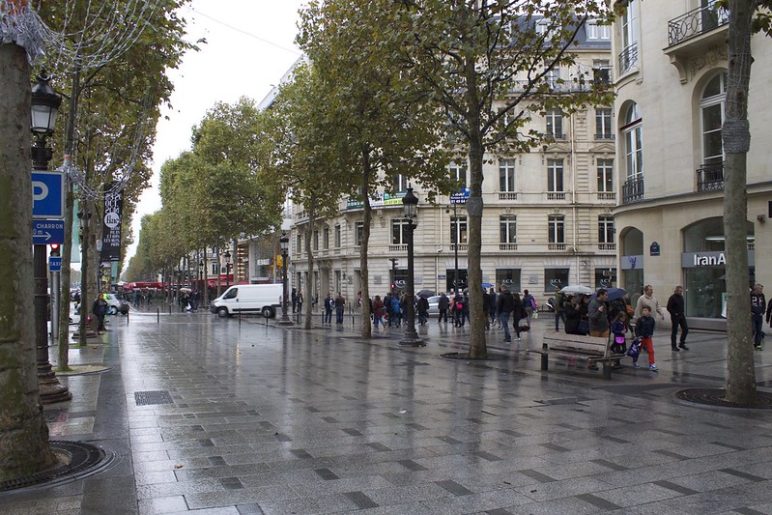Since December 2018, Seattle and Minneapolis have passed laws allowing more people to live in their previously sacrosanct single-family neighborhoods, tripling the number of homes allowed on each lot. Sightline and others have trumpeted these reforms as wins for housing abundance, economic opportunity, and the climate. Breakthroughs!
What do we know so far about how to win the fight for affordable, post-carbon communities?

And they are breakthroughs. They have few precedents in recent decades of local housing law on this continent: the sanctum of single-family zoning has been breached. But viewed from a broader perspective, they are breakthroughs in a war we are losing. Or at least, a war we’re winning so slowly that we might as well be losing.
Consider: the Seattle win took five years of relentless slogging effort, in perhaps the most favorable political context anywhere on the West Coast, just to welcome a backyard cottage plus an in-law apartment at each detached house. And even this five-year span understates the duration of the struggle. Pro-housing voices have been calling for more such accessory homes for decades. The first time I personally made the case was in 1996. Seattle’s former mayor, Greg Nickels, remembers proposing it as a city council aide in 1979. Minneapolis, similarly, reformed dramatically by allowing small triplexes on each single-detached parcel but did so in political conditions that are rare and with a cap on building sizes that will cause few to be built.
These were real wins. But they were breakthroughs, like—to use a military analogy—the occasional ones along the continent-spanning trenches of World War I. Divisions would climb out of their earthworks and run into the machine gun fire of no-man’s land, dying by the thousands, to gain territory typically measured in yards. A breakthrough of a mile was a signal accomplishment, and yet, it was still only a mile. Likewise in Seattle and Minneapolis, instead of one home per lot, up to three will be legal: a triplex in Minneapolis and a house with an in-law apartment plus a backyard cottage in Seattle. Because bans on apartment buildings survive across almost all urban land in these cities, though, their housing shortages will abate only modestly. Most people will still have to move to the sprawling outskirts, far from jobs, parks, schools, and transit, to buy or rent moderately priced homes. Disadvantaged families, including people of color, will have to pay ever more to live in their accustomed neighborhoods or will be shunted aside, displaced, by the arrival of middle-class people to urban neighborhoods. Most people will not gain the chance to live in the kind of compact, mixed, walkable, opportunity-rich neighborhoods that are strong antidotes to climate change and can be escalators out of poverty for low-income families.

Paris by Patrick Nouhailler used under CC BY-SA 2.0
I am, you may be thinking, overstating the drama: local zoning politics are not World War I. Neighborhood planning disputes do not involve machine guns or barbed wire. But these battles do have dire stakes, especially for people on the losing sides of the inequality gaps that plague our cities and our planet. We’ve staked their futures on a process of reform that involves endless months of hearings, debate, local elections and referendums, law suits, and appeals—all processes that underrepresent the people on the same losing sides and all processes that often end without appreciable change in the parties’ positions on the ground.
The content of zoning rules—setback measurements and parking minimums, height restrictions and floor-area ratios—seem boring, but their repercussions are immense. Widespread housing shortages caused by local zoning rules are keeping millions of people poor, contributing to homelessness for tens of thousands, worsening racial and class segregation, dampening economic prosperity for all, and speeding climate catastrophe. With so much at stake, it’s no wonder that trying to upzone an area to allow more neighbors can feel, for proponents, interminable, grinding, costly, maddening, exhausting, demoralizing, and slow.
More than a century ago, in 1914 and 1915, young Winston Churchill, then a cabinet member with responsibility for the British Navy, joined other leaders in attempting a bold strategy for winning the Great War—a way to cut short the trench-bound butchery in France. They attempted to go around the lines to the south and east, through the Dardanelles and Bosporus straits that lie on the two sides of Istanbul.
The strategy was sound, but their officers badly bungled the attempt, largely by dawdling so long that their enemies had time to prepare a defense. Had they acted swiftly, they would have connected with their Russian allies and been able to attack Germany in its soft underbelly. One British officer later lamented, “because we didn’t try [soon enough], another million lives were thrown away and the war went on for another three years.”
In this article and the series it launches, I step back from discussions of front-line maneuvering and “what should be” that usually occupies Sightline’s work on housing and urbanism. Instead, I ask: What do we know so far about how to win the fight for affordable, post-carbon communities? Can we win faster in the Cascadian cities of greater Portland, Seattle, and Vancouver and, by extension, in their tech-booming peers elsewhere?
Can we go around the normal trench warfare of local zoning disputes? Are there new ways to overcome, outmaneuver, outflank, or sideline conventional land-use politics and swiftly, even decisively, convert cities from auto-dependent sprawl-villes to meccas of green walkability? Are there better paths to abundant housing in low-carbon neighborhoods?

Vienna by Luca Sartoni used under CC BY-SA 2.0
In search of opportunities such as these, I will describe in this series the results of a bold housing plan in Seattle called the Housing Affordability and Livability Agenda (HALA) which attempted to forge a new political coalition and bring previously quiet, marginalized, or bypassed voices into city decision making. Then I’ll look at escalating local zoning fights to the state and national levels of government, where the relative power of local obstructionism can be counterbalanced by political parties, major employers, unions, and other interests that stand to gain from abundant housing but for whom local planning debates are too picayune to merit engagement. I’ll also examine the displacement of vulnerable people as an acute and grievous side effect of housing shortage and highlight anti-displacement strategies that can complement abundant housing. Along the way, I’ll look at innovative strategies worth piloting. A strategy called “hyperlocalism,” for example, harnesses the self-interest that usually powers obstructionists’ challenges to homebuilding by decentralizing zoning authority to the individual residential block. The point in every case will be to seek political strategies that can win the war for abundant housing.
First, though, as befits any war-fighting analysis, I will review the stakes, map the battlefield, and profile our adversaries.
Next time: What’s at stake.











Matt McRae
Thank you, Alan. This kind of assessment – stepping back and reconsidering overall strategy – is desperately needed because, as you (and Bill McKibben) point out, we are losing by winning slowly. I can’t wait to hear what you see from the 30,000 ft. view.
shelterUSnow
Zoning (more exactly color-coding land-use by autocrats & bureaucrats) remains the greatest obstacle to affordable, environmentally-sustainable starter-housing for ex-renters, while renters remain the primary example of segregation-by-zoning. (low-income most likely residents of cheap-apartments on cheap-land, with high-income most likely residents of recently gentrified neighborhoods of Apartment Resorts) The judicial, economic and government game of removing the design-process from the owner or renter occupant and their consultants, insures that Fathers Know Best paternalism is perpetuated and that the B.I.G. (B.anking-I.ndustry-G.voernment BROTHERhood continues to set-the-rules. Good example is American Building Code, which characterizes itself as “International” where in reality it is written by the American Brotherhood and use little elsewhere on the planet. Sadly political-discourse continues to cover the facts.
Jim Knock
The article’s WW1 analogy is a good, even if only because most stakeholders tend to view it as a win/lose situation and fight to the near death to preserve their historic gains. The millions of casualties this is producing should be a signal that finding a peaceful option is far superior to finding a flanking action (which will always be matched by defensive action by the opposition leading to a new stalemate.)
No stakeholder has a monopoly on the best action. Once we can accept that, maybe then we might be able to find common ground to resolve the worst conditions.
The 2-3 decade of stalemate in the US government mirrors the positions stakeholders are taking in the whole housing/climate change discussions.